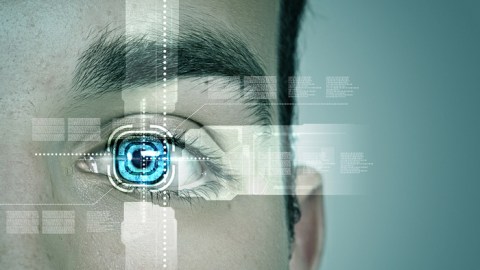The Extinction of Passwords

Currently, passwords are total chaos. In fact, most people have terrible passwords that are easy for hackers to guess. Even worse, many people use the same password for all their accounts, and they haven’t changed their password for years. So all a hacker has to do is guess the password once and they’ll have access to the user’s entire life. And while we were all advised to change our passwords after the recent Heartbleed attack, very few of us actually did.
Since we’re not really managing our passwords appropriately, it’s time to get rid of the hassle of passwords and use something with more data points and that is unique to each individual. This is where advanced biometrics comes into the picture. Thanks to advanced biometrics, we are getting close to making passwords go away … and I say, “Good riddance!” Here are a few of the biometrics coming to your smart phone, tablet, or laptop soon.
• Facial Recognition: Today’s facial recognition is extremely advanced and can separate you from millions of other individuals very quickly. In fact, several years ago I developed an app for the military to use during emergency response situations. Using the app and cameras installed around the base, the military personnel can identify every person on the premises and know exactly where each individual is—all using facial recognition. In everyday use, you already have a high-quality camera in your smart phone that could interface with a facial recognition app. And since facial recognition for identification will be 3D rather than 2D, someone can’t hold up a picture of you to bypass the security. So this is certainly a great biometric that is much more secure than a password.
• Fingerprint Recognition: Apple already has fingerprint readers on their latest iPhone, and other manufacturers are following. Of course, we’ve been using fingerprint plug-ins for laptops at the enterprise level for many years. One of the more advanced fingerprint techniques emerging is to read the blood vessel pattern underneath your skin. Now that Apple has starting using this on their smart phones, this represents the beginning of a more widespread use of biometrics.
• Eye Recognition: Eye scans for identification have been around for a long time. Early versions used a laser to read the blood vessel pattern of your retina. Today, you don’t have to use a laser. All it takes to identify you is a simple scan of your eye with a light you will not even notice.
• Voice Recognition: Everyone’s voice is unique. So by just talking to your smart phone or into your computer’s microphone, you’ll be able to verify that you really are you. While voice recognition has not been covered much in the press, it’s coming on strong.
• Heart Rate Recognition: Just like the other biometrics, everyone’s heartbeat is unique. Soon your devices will be able to get your pulse from your thumb, just like a fingerprint reader, and use that to identify you.
• Behavioral Profile Recognition: This refers to how you behave when using your device. For example, how you type is unique to you, including your speed and cadence when typing. Another example is how you hold your phone when using it. Since our devices have so many different sensors embedded, it’s easy to determine whether you are really the one using the device.
The point of all these biometrics is to ensure you’re you when using your device and accessing your many online accounts. After all, if your credit card information is stolen or your phone or other device gets into the wrong hands, you want to make sure someone else can’t use it, especially with so much sensitive financial and personal data people store these days.
As I see it, we’ll soon use one biometric for simple password replacement for things that are not vital, but we will use multiple biometrics for things that need more security. For example, if I’m accessing my social media, I might use one biometric. If I’m using a credit card online, I might use two biometrics. If I’m logging into my bank account or doing a securities trade, I might use three or four biometrics to make it even harder for someone to get in and hack my account. And best of all, you won’t have to remember all those passwords. All you’ll have to do is use your own body’s biometrics.
So it’s time to say good-bye to passwords and hello to biometrics … and hello to a more secure online experience.





